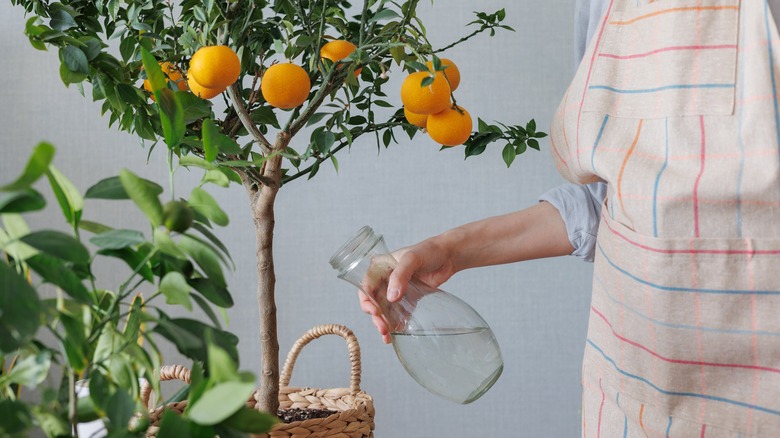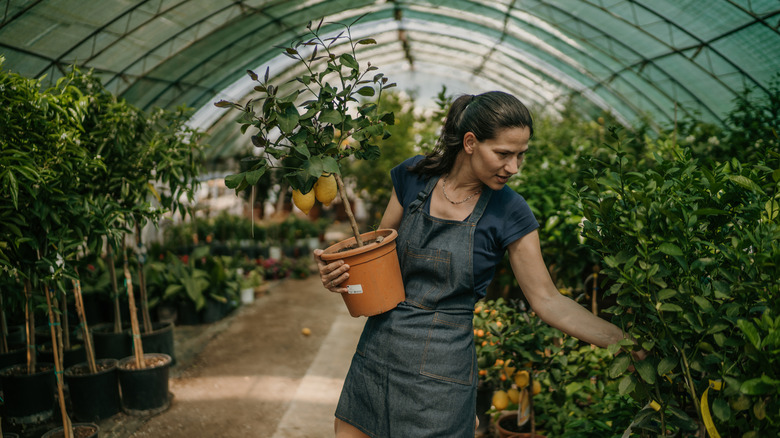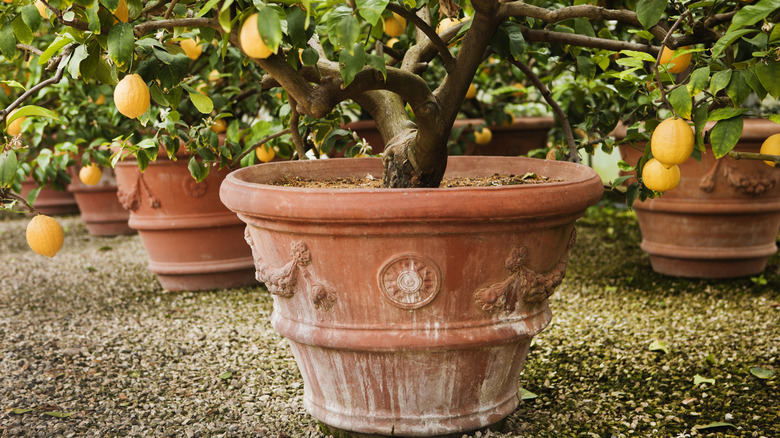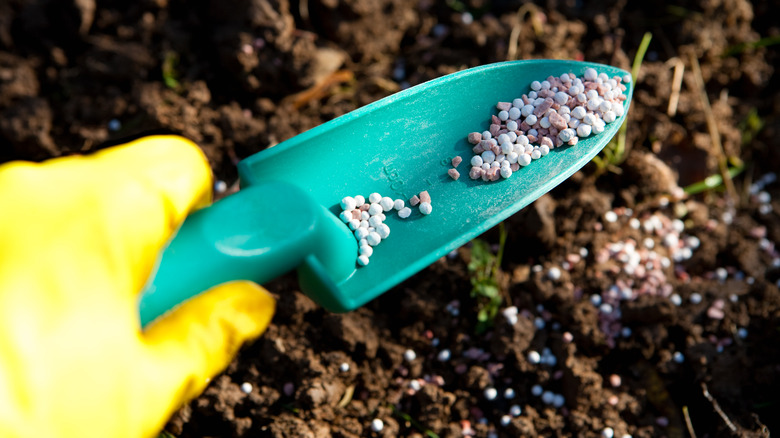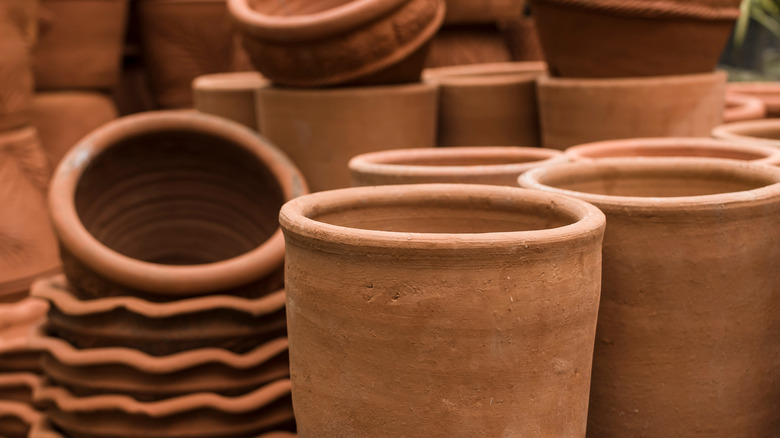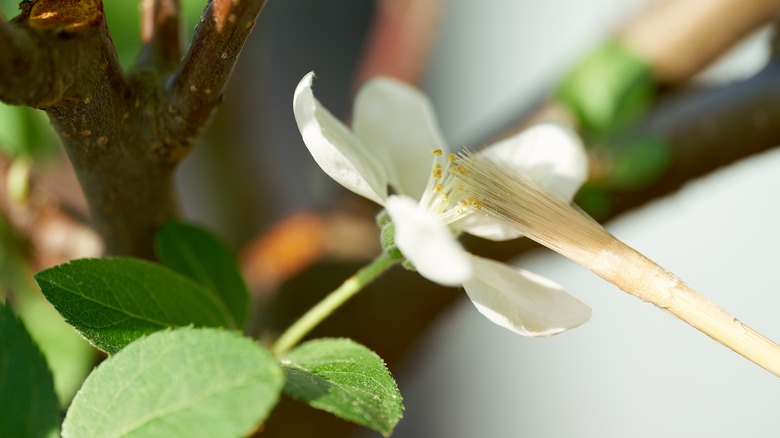What You Should Know Before Growing A Citrus Tree Indoors
Growing your own produce is a great way to take your home's greenery from decorative to functional, but many of us don't have the space or ability to maintain a full-blown outdoor garden. Luckily, there are plenty of plants that don't require a large backyard for a harvest. Indoor fruit trees offer great decoration and summery freshness throughout the year — and nothing beats the feeling of being able to see and taste the results of your hard work in the form of homegrown produce.
Gardening in pots is a great option for beginners because you can completely control your plant's environment and surroundings, allowing you to bypass annoying hangups like poor soil quality, limited space, and less-than-perfect weather conditions. With that being said, citrus trees can be a bit of an intimidating project if you've never tried to grow your own before. This anxiety can easily be put to rest with a bit of research that'll get your journey started on the right foot.
Choose the best citrus tree for you
When growing your own citrus indoors, you have to first decide which kind of plant you want. Unfortunately, not every variety of citrus tree is going to thrive in an indoor environment, but there are still plenty of options to explore. Lemons, kumquats, tangerines, and oranges are all capable of being grown on a smaller scale — just be sure to go for smaller or dwarf varieties.
Fans of lemon are lucky when it comes to their options: Both Ponderosa and Meyer lemons do well inside, as do kumquat and citron plants. If you're planning to grow oranges, look to the calamondin orange. The fruits are smaller and more sour than something you would buy commercially, but they can still be enjoyed when it's time to harvest. If you want something sweeter for snacking, however, a tangerine or satsuma tree is a great option.
Mimic the perfect environment
Once you've chosen which citrus plant to grow, you need to make sure it has the environment it needs to thrive. Citrus plants are native to warm and tropical climates across the world, from Australia to southern Asia, so they will obviously do well in similar conditions. To mimic these environments, you need to focus on three basic things: soil, water, and sunlight.
When planting your citrus tree, go for a sandy loam soil with a solid amount of drainage to prevent sogginess and root rot. Only water the soil when the top few inches dry out — but consider bringing in some additional humidity with a mister if the air is particularly dry. Citrus plants thrive in bright, direct sunlight with a fair amount of heat, so feel free to keep them outdoors during the warmer months of the year if you have room. Once temps begin to drop, bring them inside and place them by a window that gets plenty of sun throughout the day.
Don't forget to fertilize
Citrus trees might not require much care and upkeep when it comes to watering, but they do need a bit more TLC to ensure the soil stays nutritious during their peak growing season. Thankfully, you really only have to worry about watering and maintaining proper levels of sunlight throughout the rest of the year.
These months of active growth are early spring through summer, usually around March through August, depending on your environment. During this time period, fertilize your plant's soil every two or three weeks with a liquid or solid fertilizer. If you don't already have a brand or mix you typically use, there are specific citrus-focused fertilizers available for sale — like this Expert Gardener Citrus Plant Food Fertilizer — that promise a more fruitful yield at the end of the active growing season. According to Petal Republic, an NPK ratio of 6-3-3 or 4-3-4 is ideal.
Choose a correctly-sized pot
Citrus trees meant for indoor growth and cultivation are smaller than their outdoor counterparts, but they still take up more space than something like flowers or herbs. To ensure your plant has enough room to grow, you need the appropriate-sized pot. Select one that's large enough to prevent overcrowding and damage to the root ball — but not too big that it will be hard to maintain the correct level of soil moisture.
When you're first starting out, an 8-inch diameter container is the perfect size. Throughout the years, though, you might have to repot your plant as it grows. After a few years, upgrade to something that's 10 or 12 inches in diameter, then swap this out for a 16- to 20-gallon container when your tree starts to reach full maturity. No matter the size, however, it's still important to make sure the pot you choose has an adequate drainage system in place to prevent root rot.
Self-pollinate if you're hoping for a plentiful harvest
For many, the main appeal of growing a citrus tree indoors is harvesting your own fruit. Thankfully, most citrus plants make this process easy as they self-pollinate, so they don't need any other plants around to create fruit. However, you can increase your chances of success even more by trying out hand pollination. To do this yourself, grab a small, clean paintbrush or makeup brush. Now, collect a bit of pollen from each open bloom's stamen (the part that produces pollen) and rub the brush over each stigma (the sticky bulb that receives pollen). This will increase the plant's chances of bearing more fruit.
Growing your own produce — especially when it's coming from a tree — can be quite intimidating, but indoor citrus plants are actually fairly simple to grow and maintain. As long as you ensure that you're giving your plants the proper care they need, you'll have an indoor tree that both bears fruit and acts as a lovely decorative accent year after year.
